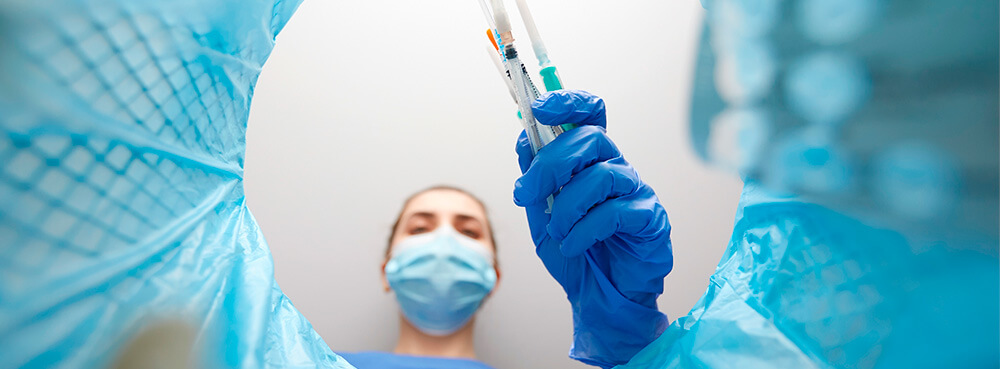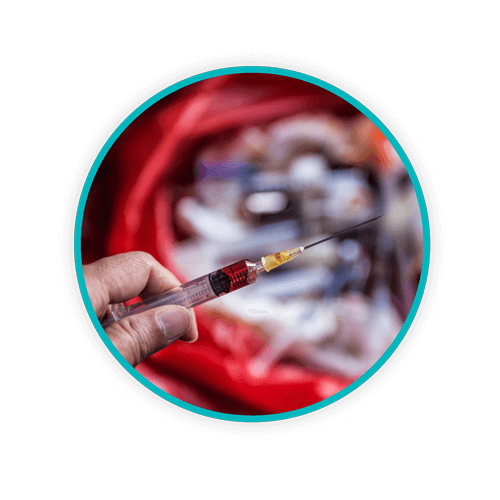How Do You Dispose of Sharps Waste?

Knowing how to safely and compliantly dispose of sharps waste is essential for all healthcare facilities, medical providers, and many other businesses.
What is sharps waste? It is a subset of biomedical waste composed of used “sharps” – including any device or object used to puncture or lacerate the skin, such as disposable scalpels and blades, hypodermic needles and lancets, broken capillary tubes, broken rigid plastic, and culture slides.
Any injury by a sharp object increases the risk of infection or contamination with a bloodborne pathogen. Here’s what you need to know for proper disposal.
TOPICS WE WILL COVER:
1 / Purpose of sharps waste disposal guidelines
2 / Where to find resources and guidance
3 / Sharps waste disposal processes
4 / Transportation of medical waste
Purpose of sharps waste disposal guidelines
Sharps have the potential to be contaminated with biomedical waste, including blood or bodily fluid, which present acute infection risks. Sharps or needlestick injuries occur not only before and during treatment, but also after use. Often, this happens thanks to improper disposal behaviors or when sharps are left unattended.
Such dangers are found not only in hospital environments, but also laboratories, cancer treatment facilities, and any location where patients with transmittable illnesses and/or infections are treated.
Standard operating procedures for the safe handling and disposal of sharps minimise the chances for healthcare workers to receive a needlestick injury, thereby reducing infection, contamination, and transmission risks. Adequate equipment, disposal processes, and employee training are essential components of sharps waste disposal procedures for any facility.
Where to find resources and guidance
One of the primary resources containing guidelines for medical waste management, including sharps waste, is the Canadian Biosafety Handbook (2nd edition), specifically Chapters 16 through 20.  Guidelines for safe sharps usage are also provided by the Canadian Centre for Occupational Health and Safety (CCOHS).
Guidelines for safe sharps usage are also provided by the Canadian Centre for Occupational Health and Safety (CCOHS).
Another resource for information on prevention of sharps and needlestick injuries is the Centre for Communicable Diseases and Infection Control at the Public Health Agency of Canada (PHAC). A good place to start is by reviewing their publication entitled “Routine practices and additional precautions for preventing the transmission of infection in healthcare settings,”which provides an overview of general infection control strategies.
The section on sharps safety (found on page 75) provides several recommendations. Importantly, the document emphasizes that “safety-engineered sharps devices should be used wherever possible.” It also advises against recapping needles and recommends that single-use sharps be immediately disposed of in puncture-resistant containers that are accessible at the point of care. Ultimately, the goal is to consider the “safety of patients and healthcare workers” when designing a sharps program; however, it’s important to remember that provincial or terrirorial regulations may apply.
Sharps waste disposal processes
Sharps waste disposal processes require compliance regarding the selection and placement of containers in healthcare settings and home environments where sharps are used. Section 16.1.5 of the Canadian Biosafety Handbook covers sharps waste and states that, “Using puncture-resistant containers located close to the point of use minimizes the risk of injury during handling.” 
In most cases, sharps waste will be decontaminated off-site, and just like all other forms of biomedical waste, sharps waste may be stored temporarily, “provided that it is in a designated area that is separate from other storage areas and clearly marked with a biohazard symbol.”
It is essential for the safety of those handling such waste, including waste transport company workers, that compliant disposal containers are immediately labelled and that movements of sharps waste containers are limited to reduce the risk of personnel exposure and accidents.
In addition to the guidance found in the Biosafety Handbook, the CCOHS similarly recommends that needles should be placed in wide-mouthed and puncture proof containers located near the point of use. Containers should be replaced when they are three quarters full to avoid overfilling. Local regulations regarding biomedical waste handling processes require that the containers be correctly sealed and labelled before collection and disposal.
A brief word about transportation of medical waste 
Any facility that requires transportation of medical waste prior to decontamination should also be aware of the regulations provided by the Transport Canada institution, the entity responsible for all transportation programs and policies to ensure environmentally safe transportation. All transport companies are required to follow best practices as well as operate according to current legislation and guidelines when it comes to medical waste disposal, including that of sharps containers; however, the burden is on the generator of the waste to ensure compliance from cradle to grave.
Daniels Health Canada is dedicated to protecting the safety and health of Canadians as well as the environment. Compliant sharps waste disposal processes ensure safety and protection. With decades of experience in medical waste management, Daniels provides resources, products, and educational content to ensure compliance with sharps waste disposal processes. For more information on sharps safety and disposal methods, call us today.
Let's Talk!
Your time is valuable, and we don’t want to play hard to get. You can either phone us directly on the details listed on our contact page, or feel free to fill out this short form and one of our team members will get back to you as quickly as possible.
